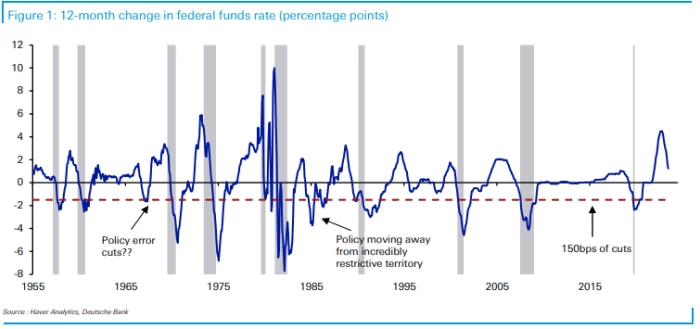Fed Rate Cuts: A Blessing or Curse? What Stock-Market Bulls Need to Consider
Deutsche Bank’s analysis points out that historically, a 1.5 percentage point reduction (equivalent to 150 basis points) in interest rates by the Federal Reserve has typically been linked to economic recessions.
Investors, hopeful for a gradual economic slowdown, find solace in the market’s anticipation of the Fed implementing such rate cuts in 2024.
Nevertheless, Jim Reid, a strategist at Deutsche Bank, underscores that historical data reveals that when the Fed has executed a 1.5 percentage point rate cut within a year, it has predominantly been in response to a recession.
Despite a slight pullback in stocks at the start of the new year, the robust market performance in 2023, marked by record closes for the Dow Jones Industrial Average and significant returns for the S&P 500, has contributed to this optimism. Investors fueled this sentiment as they anticipated a shift in Fed policy toward lower interest rates.
Although rate traders have moderated their expectations for cuts in 2024, the CME FedWatch tool indicates a 53.8% probability of a 150 basis point or more reduction in the fed-funds rate by December. Reid highlights an exception to the recession pattern in the 1980s when Paul Volcker led the Fed.
However, this was an atypical scenario as it was preceded by rate hikes into “super-restrictive” territory.
Another anomaly occurred in the late 1960s, coupled with increased public spending due to the Vietnam War. However, this resulted in inflation, later deemed a policy error. Reid emphasizes that the Fed aims to avoid a recurrence of such inflationary pressures.
Consequently, he concludes that historical precedents strongly suggest that the expected rate-cutting environment is more closely associated with a recession than a smooth economic landing. If a recession does not materialize, achieving a 150 basis point reduction over 12 months, based on historical data, would be a challenging outcome.





